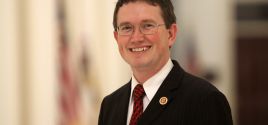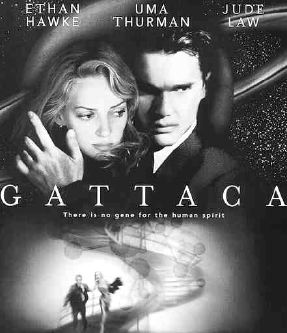The eugenics crusadeAre we doomed to repeat the past? Website chronicles shameful period of historyBy Jim Regan The Christian Science Monitor Dec. 19, 2006 |
Popular 
Rep. Thomas Massie Warns Congress is Trying to Pass Hate Speech Laws to Outlaw Criticism of Israel

ADL Urged Congress to Pass FISA Law Spying on Americans to 'Protect Israel'

'Sniper Seen on Roof Overlooking Pro-Palestine Protest' at Indiana University

Claim Jewish Student Was 'Stabbed In The Eye' by Pro-Palestine Protester Draws Mockery After Video Released

Axios Poll: Majority of Americans Now Want Mass Deportations
  For many if not most people, the term "eugenics" gives rise to one of two images: Nazi Germany's attempts at "purification" and creating an Aryan master race or the science fiction predictions of such films as Gattaca. For many if not most people, the term "eugenics" gives rise to one of two images: Nazi Germany's attempts at "purification" and creating an Aryan master race or the science fiction predictions of such films as Gattaca.Fewer are aware (and some who are aware would rather forget) that there was a powerful eugenics movement in the United States during the first half of the 20th century. And though it would be comforting to think the movement was the product of a radical fringe, it boasted such champions as Alexander Graham Bell and Oliver Wendell Holmes who declared in the Buck vs. Bell (forced sterilization) decision of 1927, "Three generations of imbeciles are enough." Given the ongoing genetics revolution, the Dolan DNA Learning Center (part of the Cold Spring Harbor Laboratory in New York) has decided it is time we were reminded of that history and has gathered an impressive -- and sobering -- look at this lamentable crusade, at the Image Archive on the American Eugenics Movement. An especially appropriate host for this project, the Cold Spring Harbor Laboratory was a centre of research for the Human Genome Project and also served as the Eugenics Record Office during the early part of the last century. The website, first launched in January 2000, had a significant upgrade last November and offers Flash-interactive exhibits and a searchable image archive with over 2,500 photographs, letters, articles, and scientific reports related to the eugenics movement. (Those who might prefer a lower bandwidth, mainly HTML version of the site will find a link to the original production at the bottom of the Splash page.) After entering the main exhibit, surfers can access a useful, but easily overlooked Project Overview link at the bottom of the browser window. Opening with a quote that seems to be included as much for the benefit of the site's hosts as its visitors ("Those who cannot remember the past are condemned to repeat it"), the Overview provides a quick background to the subject and a warning that the material contains much that most people today will -- fortunately -- find offensive. Documents in the Archive can be accessed through directories arranged by Topic, Object, and Time Period, as well as an Image collection and Keyword Search. Visitors can easily move between directories through a series of tabs at the bottom of each page and each topic collection includes a brief introduction. Materials range from such benign subjects as agricultural genetics and an explanation of Gregor Mendel's theories of heredity to forced sterilization laws and the "Fitter Families for Future Firesides" contests -- where human "stock" was judged at state fairs along with the horses and pumpkins. Images are accessed through thumbnails arranged along the top of the browser window and each opens into its own page, with captions, links to related subjects, and an "Image Toolbox." This last feature allows documents to be displayed in both printer-friendly and zoomable formats and provides links to text transcriptions of printed materials as well as direct URLs so that visitors can come straight back to specific documents. Naturally, it would be helpful to place such an extensive collection into some sort of context, so the Archive also presents nine virtual exhibits chronicling the American eugenics movement. (The home page interface for this feature can be a bit hyperactive due to overcrowding of image-mapped hot spots, but a more orderly Menu of Virtual Exhibits is also available through the home page.) Beginning with the movement's social and scientific origins, moving onto examine traits studied and research methods and flaws and carrying through to the movement's impact on laws regarding marriage, sterilization and immigration, each exhibit uses a handful of images to accompany multipage histories. Text-only versions are also available. As for design, while the experience of the Virtual Exhibits is almost identical to that of the old site, the switch to Flash has created a much more effective and efficient Image Archive. Still, there isn't much in the way of bells and whistles here and there doesn't need to be. The Archive may well leave us speechless, but doesn't need a dazzling interface to do so. With the speed and scope of such developments as the mapping of the human genome, prenatal genetic screening, commercial trade in the sperm and eggs of "exceptional" donors and the threat of discrimination based on genetic information, modern parallels with history are difficult to avoid. And while gene manipulation may allow scientists to bypass the selective breeding and sterilization of classic eugenics, many of the same risks would seem to exist in any plan to improve the human race through genetic intervention. As Santayana said and as the DNA Learning Center reminds us, "Those who cannot remember the past..." The Image Archive on the American Eugenics Movement can be found at: www.eugenicsarchive.org |



